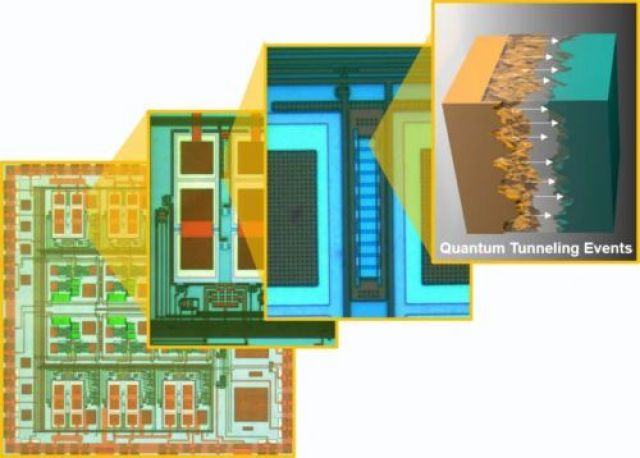Over the past few years, in the field of electronics, in particular in the field of devices from the category of the Internet of Things, there has been a tendency to constantly increase the energy efficiency of these devices. This is because scientists and engineers are constantly inventing new methods to ensure longer operation of devices with less energy. Scientists from the University of Washington managed to achieve a record in this direction. a prototype version of the logger sensor created in their laboratory can work for about a year on the energy of just one pulse, which is equivalent to the total energy of only 50 million electrons. This was achieved by using a physical phenomenon called quantum tunneling .
The laws of quantum physics, which operate at the level of individual atoms and subatomic particles, determine that an electron can behave like a particle and a wave at the same time. This phenomenon is called quantum dualism, and in this case it is used to control the movement of electrons from one part of the circuit to another with virtually no energy loss.
In conventional electronic devices, the generation of an electric current, which is the main carrier of information, requires a constant supply of excess energy to the electrons in order to overcome potential barriers that arise in their path. And if you are going to make a really efficient device that works with very low energy costs, then overcoming potential barriers should be implemented in more "tricky" ways than with the traditional approach.

And this is where the laws of quantum mechanics help us, which are used to form a special potential barrier. In this case, this barrier is the Fowler-Nordheim tunneling barrier, which is no more than 100 atoms wide. By creating such a transition, scientists were able to slow down the flow of electrons, which in turn allowed the entire system to be kept in a stable state for a long time.
The device created by scientists consisted of two systems. The first system was a sensor and logger (a device for storing sensor readings), which can be easily adapted or replaced with others that perform the functions of monitoring the concentration of glucose in the blood, measuring temperature, monitoring the supply of medicines, etc.
The second part of the device was actually an ultra-high-efficiency dynamic energy Converter based on Fowler-Nordheim tunnel junctions, which received energy from a piezoelectric accelerometer that generates weak current pulses in response to movement. In principle, such a highly efficient system for collecting and converting energy allows the use of other types of energy sources, for example, converting a small part of human body heat or radio wave energy into electricity.


